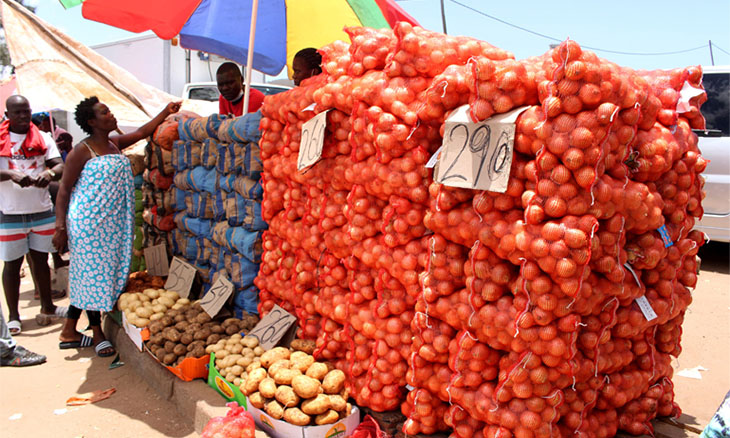Mozambique: Central bank governor attends inauguration of Metical Square in Quelimane
Mozambique consumer prices jump in January

File photo: O País
The prices of goods and services registered the sharpest increase of the last two years in January of this year, according to data from the National Statistics Institute (INE). Compared to the same month last year, prices went up 4.09%.
Difficulties in consumers purchasing essential goods and services increased dramatically in January. It was a famine for families. The prices of food products, tobacco, alcoholic and non-alcoholic drinks rose most, with increases varying between 8.47% and 9.14%.
“In relation to year-on-year variation, the city of Nampula led the trend of increasing general price levels, with approximately 4.97%, followed by the city of Beira with around 4.70% and finally the city of Maputo with 3, 42%,” data collected by INE in the provincial capitals shows.
The price surge was most notable in the cost of food, rising in general almost 10.0%. Tobacco was 11% more expensive in January. The same trend was registered with alcoholic beverages, with prices rising by about 4.8% last month, compared to January 2020.
This means that, if a citizen needed 5,000 meticais to buy a certain amount of food products in January 2020, he would now need 5,500 meticais to purchase the same amount of food.
The example above is for food only. If we add prices for other essential products, such as non-alcoholic beverages, home rehabilitation, purchase of furniture and pharmaceutical products, the bill is much higher, and life becomes more difficult.
In detail, the price of clothes and shoes increased by 3.6% and 3.5% respectively. The price of vehicles, including cars and motorcycles, increased in general by around 10% in January.
In comparative terms, INE data from the last 25 months show that the only price increase greater than that registered in January 2021, in year-on-year terms, was registered in January 2019, when the cost of living rose by 3.7%. Over the same period, the lowest rise in prices on was 2.01%, registered in September, 2019.
In monthly terms, prices rose 1.18% from December 2020 to January 2021. “The price of tomatoes rose 12.4%, coconut 18.7%, dried fish 5.5%, cooking oil 6.1%, capulanas 3.3%, rice 3.8% and kale 11.0%,” the INE reports.
From December 2020 to January 2021, the city of Beira had the highest price increase (2.09%), followed by Nampula (1.13%) and Maputo (0.87% ).
The data were collected in the cities of Maputo, Beira and Nampula in January by INE and the general price increase was calculated based on the Consumer Price Index (IPC).
The Bank of Mozambique has warned that, in the medium term, the cost of living could worsen due to the sliding of the metical, the exponential rise in Covid-19 cases, terrorism in Cabo Delgado and natural disasters.
These factors raise prices in general, leading the central bank to raise the benchmark interest rate from 10.25% to 13.25% in January.
“General inflation is expected to accelerate in the medium term, reflecting the effects of the transfer of the metical depreciation to domestic prices and the end of price containment measures enacted by the Government, within the scope of Covid-19 and climate shocks,” the central bank’s Monetary Policy Committee said last month in its press release.
In December of last year, the prices of goods and services increased 3.52%, with Nampula standing out as the most expensive city of the year, according to the INE.
In its financial report for last January, Standard Bank notes an increase in the price of the means of production for the second consecutive month, continuing the rise recorded in December, the first in nine months.
“Nevertheless, inflation has declined slightly compared to that seen at the end of 2020. The underlying data indicated a slightly higher increase in acquisition prices than that recorded in the previous month and personnel costs decreased for the first time since last September,” the bank says.
At the end of last year, the Bank of Mozambique foresaw an increase in domestic prices for 2021, essentially reflecting the effect of the end of some government price containment measures.
By Clemêncio Fijamo













Leave a Reply
Be the First to Comment!
You must be logged in to post a comment.
You must be logged in to post a comment.